
Old News Clippings Document “Mohawk” Political Revival
(Originally published in The People’s Voice, November 4, 2005)
Written by Darren Bonaparte
I would like to thank Bill Sunday of Tsi-Snaihne for the following old news clippings, found in the wall of a house being torn down some time ago. They belonged to Elizabeth (Sunday) Reeves, who collected them in a scrapbook while living near Rochester, New York, in the late 1930’s. The articles give us a glimpse into Mohawk politics of the time period, including the revival of the Six Nations as a political faction at Akwesasne.
The first and last of the articles suggest that Akwesasne gained an influx of Mohawks from the old homelands in the aftermath of the American Revolution, possibly from the Canajoharie and Fort Hunter villages. It has long been thought that the Mohawks of those villages migrated to the Six Nations reserve at Grand River and to the Tyendinaga reserve near the Bay of Quinte. These articles suggest at least some made their home at Akwesasne…and retained the memory of their association with the Six Nations for a century and a half of time.
MOHAWKS MAY HEAL OLD SPLIT
Would Rejoin Six Nations After 150 Years
AKRON, Sept. 21. (AP) For the first times since they seceded from the confederacy more than 150 years ago, the Mohawk Indians today asked for reinstatement in the Six Nations. With their travel-stained automobile parked around the council house of the Seneca nation on the Tonawanda reservation, the Mohawks entered into a powow regarded as one of the most important inter-Indian councils since they forsook their brethren to join the British forces operating in Northern and Eastern New York during the revolution.
The deliberations struck a snag almost at the outset over the question of religions.
The Mohawks, living on the St. Regis reservations on both sides of the St. Lawrence river, have been Christians while the traditional chieftans of the Six Nations are staunchly pagan, as are most of the tribes.
Indian orators, using the ancient language of the tribes, debated the point for hours but only the Indians know what they said for whites were barred from the long house.
However, Thomas and Bright Fire Thunder Skye, brother St. Regis Indians, afterward said decision to return to the old Indian religion may be taken before the council ends tomorrow or Sunday.
Presiding over the council was Joshua Jones, an Onondaga of Nedrow. Chauncy Garlow of Newport, Ont., is chief of the Mohawks representing the Grand River council.
Decision to accept or reject provisions of the Wheeler-Howard act for improving the general welfare of Indians may be reached before the powow ends with the traditional [ ] dance Sunday.
(September 21, 1932)
ISSUES GOING BACK CENTURIES JOINED WITH TITLE TO VILLAGE IN ST. REGIS RESERVATION SPLIT
HOGANSBURG.– Issues that reach back centuries to ancient Indian customs, involve the International Jay treaty of 1796, and have as the principal stake the title to an entire white man’s village, are slowly coming to a head on the St. Regis reservation.
U.S. STATE TO TAKE HAND
It is a far reaching controversy in which there are so many interesting major problems that is difficult to see the whole picture clearly, but both the United States government and New York state have taken a hand in the game and are watching the situation closely as it develops.
For several years now the St. Regis Mohawks, once “the fiercest, the cruelest and the bravest, as well as the mightiest of any of the tribes of the League of the Iroquois,” have been split on the question of tribal government. The faction headed by three elective chiefs controls the tribe at present, this democratic form of government having been in existence on the reserve since 1892.
Seeking to overthrow this regime is the faction that would go back to the system of the Long House, with life chiefs named by the clan mothers ruling the tribe. Both sides claim to be in the majority.
STATE VS. FEDERAL RULE
The elective chiefs believe that the best future for the tribe is to continue under the protective wing of the state. The life chiefs’ group would throw the state overboard for a federal guardianship. Briefly some of the major issues can be stated:
Whether the tribe will continue to be governed by elective chiefs or whether control will be vested in life chiefs.
Whether New York state had jurisdiction to buy from the tribe without consent of the federal government all the land comprising the village of Hogansburg, a mile square, surrounded by the remainder of the reserve.
The future status of all New York state Indians and the responsibility of the state and federal government to them.
Ownership of the mile square comprising Hogansburg village in which about 12 Indians own property and have appealed from the levy of state and town taxes on the ground the village belongs to the Indians.
MANY CONTROVERSIES
For several years controversies have arisen on every conceivable question, such as the right of Indians to fish in closed season in Hogansburg’s limits, and always in the background the state’s jurisdiction over the Indians has been raised.
Mose White, regarded as an intellectual of the tribe in both state and federal courts, where he has appeared frequently as an advocate of the Indian, is now championing, in spite of ill health, the cause of the elective chiefs, who are headed by Chief Joseph Tarbell, a Carlisle graduate and direct lineal descendent of the first Indian chief of the reserve.
Both of these men believe that the best future of the tribe is bound up with the state, morally, educationally and economically.
“Even if the Indians get back all of Hogansburg village would that measure up to what the state has given us?” Mose White asks, declaring that the state spends annually between $200,000 and $250,000 on the tribe.
“The state has maintained our highways, our schools, including teachers, books and buses, school clothing for his needy, direct relief for unemployment, medication and hospitalization, services of a nurse and a doctor, care of Indian orphans in state schools, in fact every form of assistance possible.”
INJUNCTION SOUGHT
“What has the federal government ever given us? Not one cent had been received up to the time of the ditch drainage project three years ago.”
At the direction of Secretary Ickes, the United States attorney has named Franklin county and the board of supervisors defendants in a legal action in which an injunction is sought against the levy of taxes on Indian owned property in Hogansburg which for a century has been regarded as outside the reserve. There are about 12 small parcels owned by Indians. This action is now pending and the state has made a motion to be permitted to intervene as a party, the government challenging the purchase b y the state of Hogansburg in the 1820’s.
Monday was election day on the reserve and a group of life chief adherents attempted to prevent the election of a chief by the elective group by staging an impromptu referendum outside the council house. In spite of this referendum, carried by the life chiefs 200 to 5 in the absence of the other faction, the election was held.
U.S. OBSERVER PRESENT
There was present as an observer C. C. Daniels, brother of Josephus Daniels, and a representative of the attorney-general in Washington. Elective chiefs charged that he was partial towards the life chief group, a charge which he denied.
It was a contrasting picture–down International st. with its little Indian residences, neat cottages alternating with squalid huts, to where the beautiful St. Regis river meets the mighty St. Lawrence… Some hundred odd Indians lounging on the grass on the knoll topped by the little council house, a dilapidated little wooden building…some oratory in the Mohawk tongue, so impassioned that one could sense the eloquent flights…stolid clan mothers garbed in black shawls…and in the background a struggle for the government of a little group of Indians on an obscure border reserve, descendants of ancestors who once owned the whole state.
(April 16, 1938)
MOHAWKS ASK VALLEY LANDS
Fort Plain–(AP)–from the St. Regis reservation hugging the Canadian border, down through the Adirondack Mountains to this peaceful Mohawk River town, will come the Mohawk Indians to renew their claim for land they left 150 years ago. Garbed in full tribal dress, the high chiefs will sit at a council table today with officials of the Mohawk Valley Towns Association to present their case once more–the first such council held in the valley since 1788.
The Indians would like about 137 miles of land along the south shore of the Mohawk river, David E. Terrance, spokesman for the Mohawk Council, explained.
He said the tribe, although having retreated to northern New York and Canada during the Revolution, never relinquished ownership of the land.
Sympathetic to the Indians’ claims, Mayor Harry V. Bush of Canajoharie, vice-president of the Towns Association, asserted officials will attempt to “steer the Mohawks along the quickest road to federal ears.”
Resettlement of the tribe in the Mohawk Valley is a “federal matter” and the association will seek merely to guide the Indian chiefs, said Bush.
About 150 of the tribesmen will drive in automobiles from the reservation over smooth-surfaced highways that once were Indian trails to make their strongest plea for return of their native land since the council of 1788 at Fort Stanwix, now Utica.
The occasion for the Grand Council is dedication of Prospect Park, once the site of two Mohawk villages. Hugh M. Flick, acting director of the State Archive and History Division, will present to Fort Plain a bronze plaque marking the park as a historic Indian settlement.
(no date, probably 1939)
Next in series: The St. Regis Mohawk School and the Cultural Revival of 1937
By Darren Bonaparte, historian and author of The Wampum Chronicles. Reprinted with permission.
Darren Bonaparte is a cultural historian from the Akwesasne First Nation. He is a frequent lecturer at schools, universities, museums, and historical sites in the United States and Canada. He has written four books, several articles, and the libretto for the McGill Chamber Orchestra’s Aboriginal Visions and Voices. Darren is a former chief of the Mohawk Council of Akwesasne. He is the creator of The Wampum Chronicles and historical advisor to film and television. He currently serves as the Director of the Tribal Historic Preservation Office of the Saint Regis Mohawk Tribe.

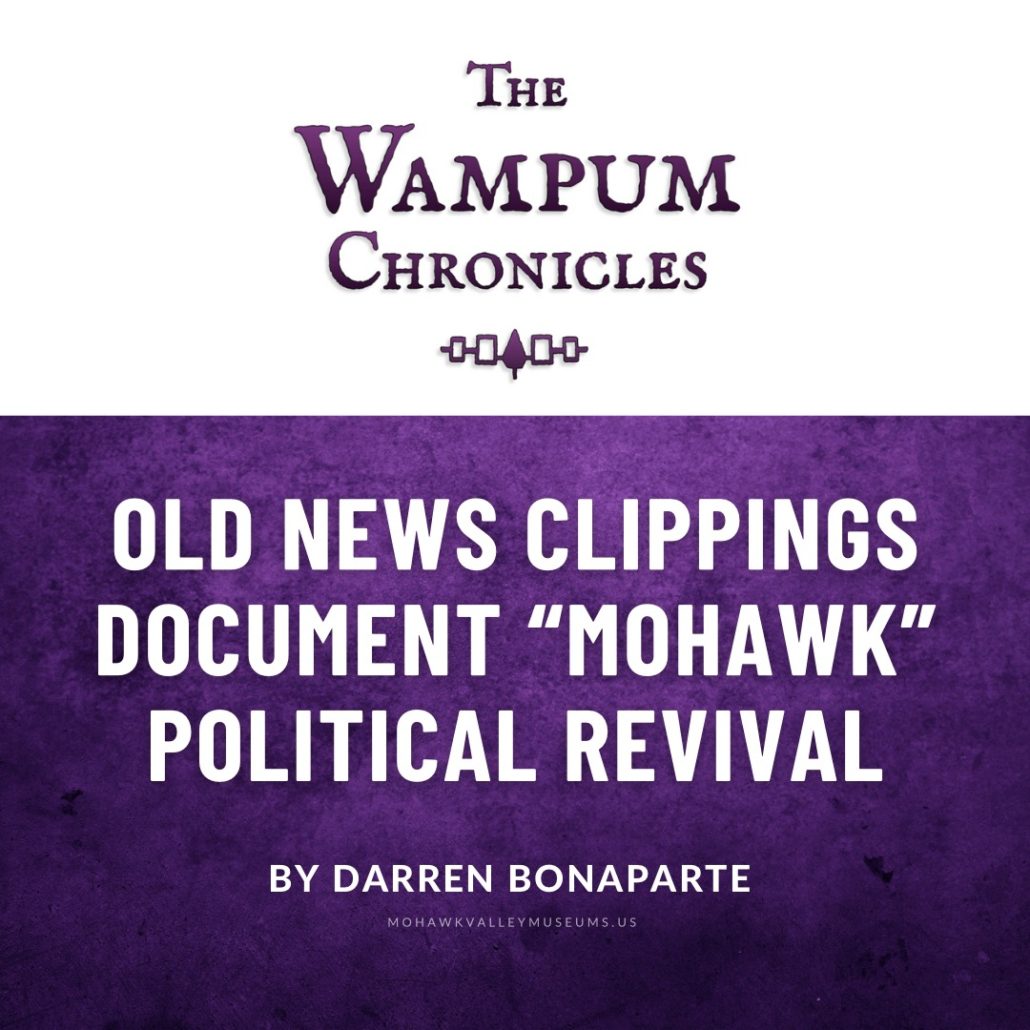




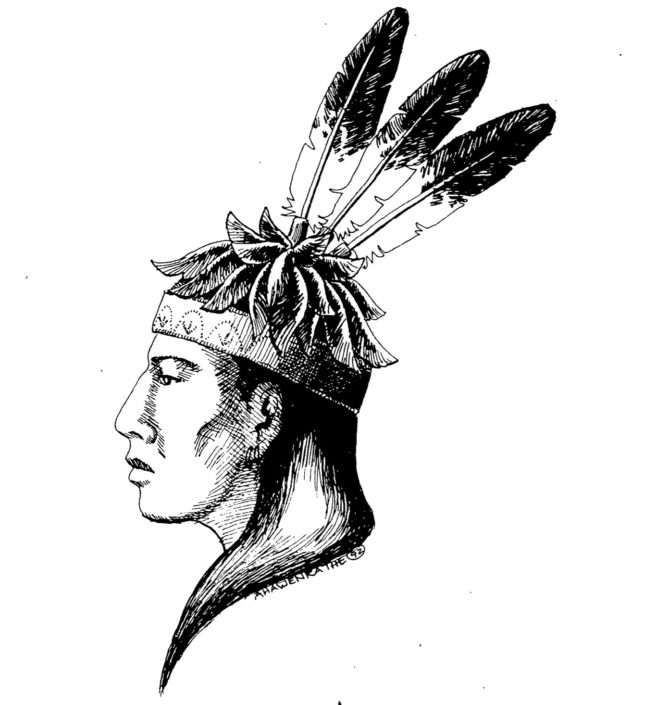
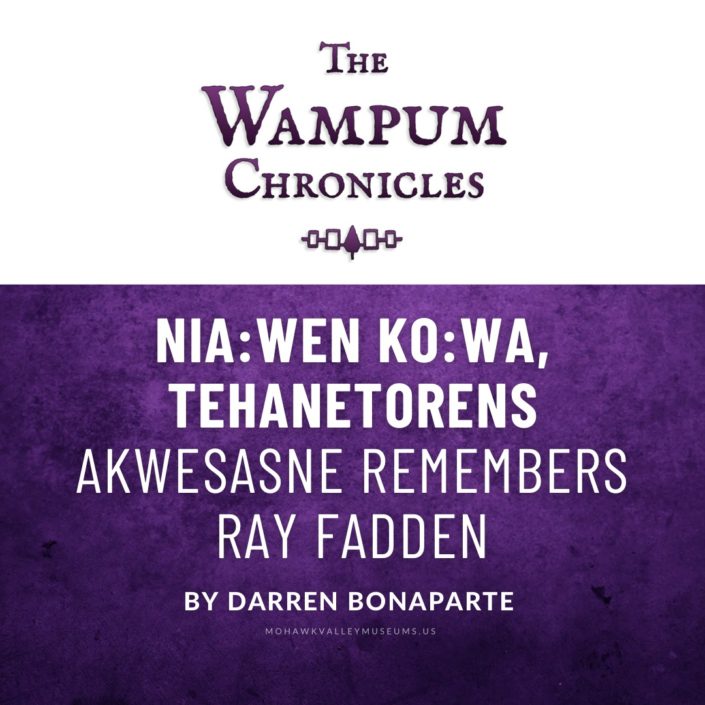
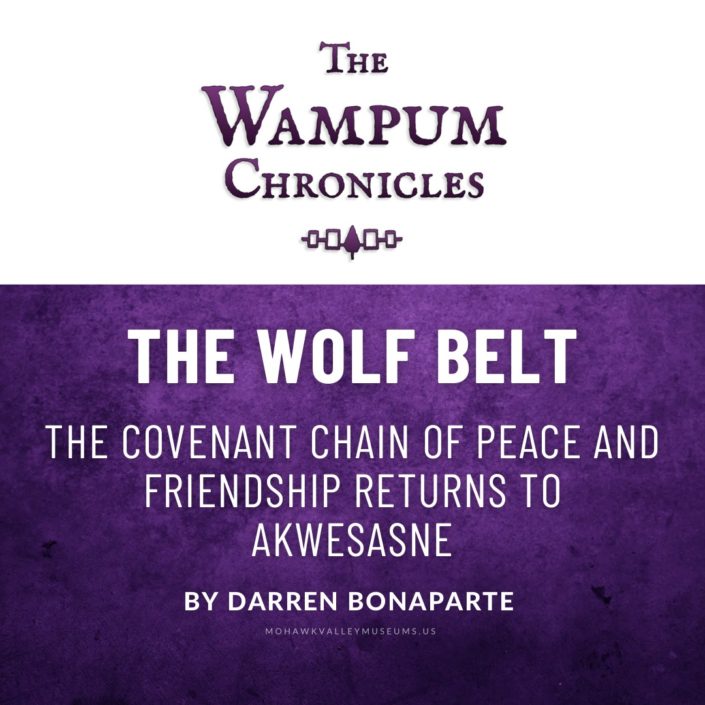
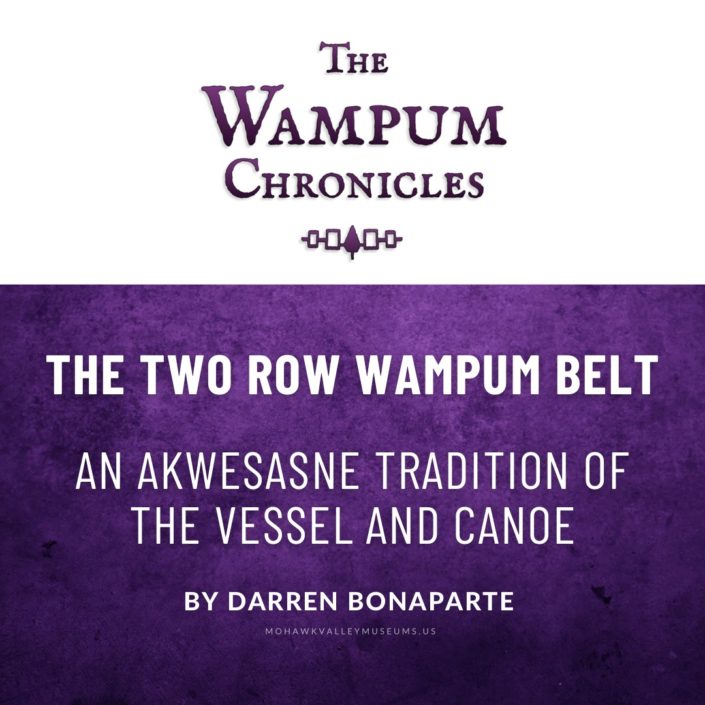
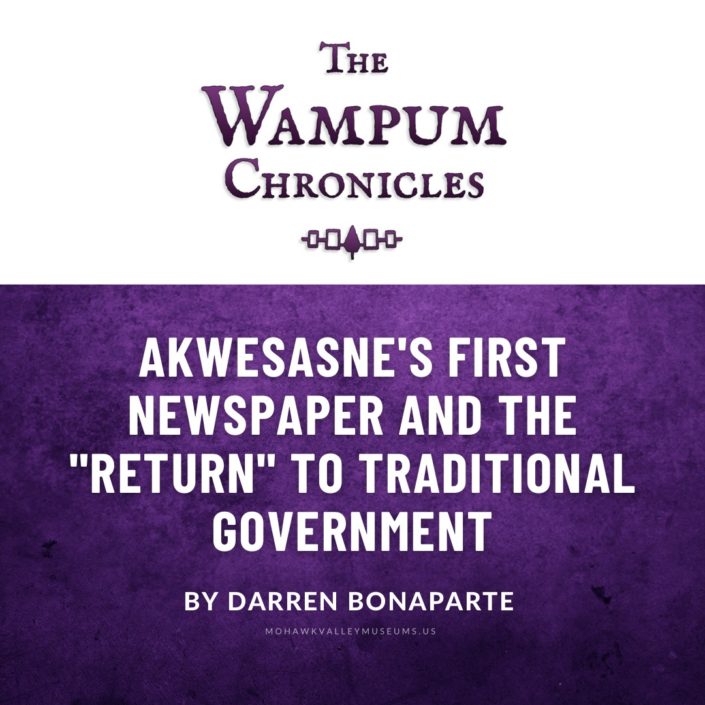
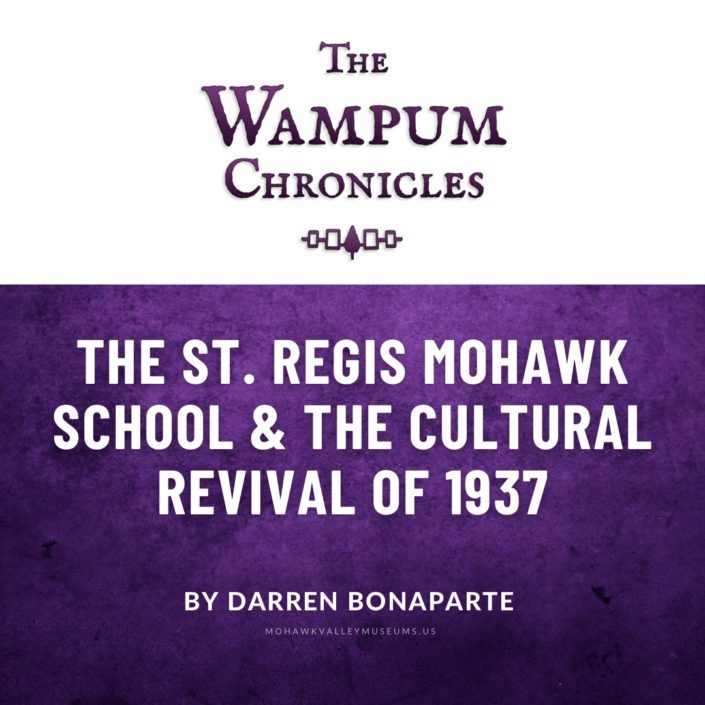
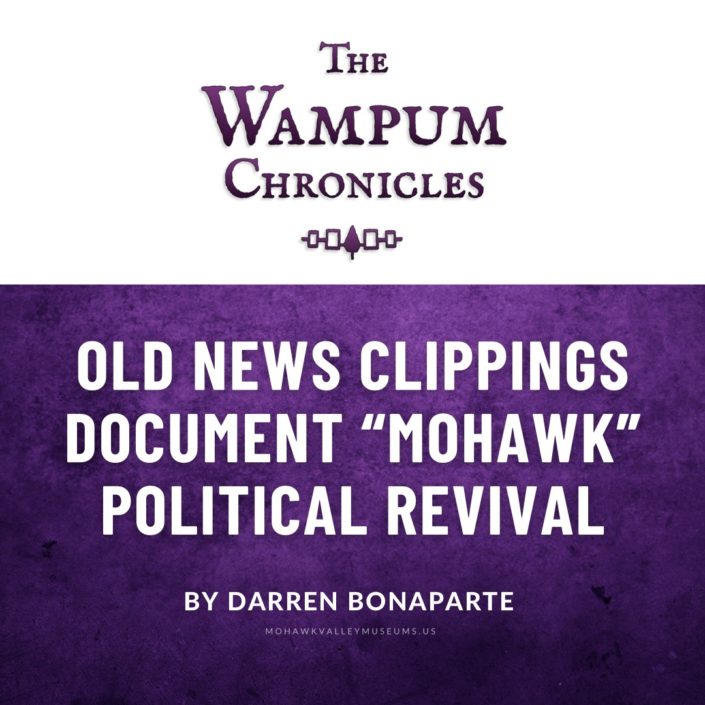

 Galbo, Joseph, and U.S. Consumer Product Safety Commission. President's Day - George Washington. Bethesda, M.D.: U.S. Consumer Product Safety Commission, -02-20. Photograph. Retrieved from the Library of Congress,
Galbo, Joseph, and U.S. Consumer Product Safety Commission. President's Day - George Washington. Bethesda, M.D.: U.S. Consumer Product Safety Commission, -02-20. Photograph. Retrieved from the Library of Congress,